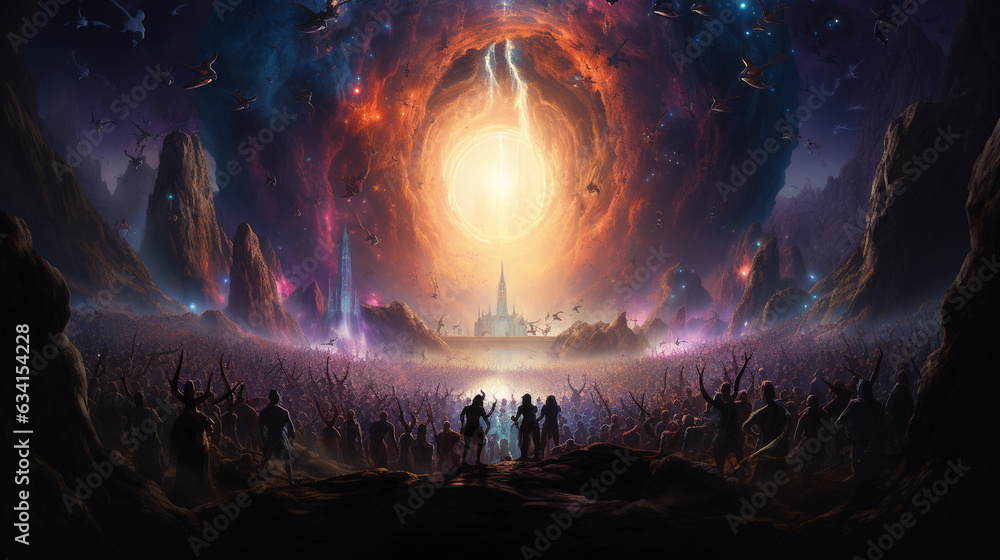Easter, an eminent celebration in the Christian liturgical calendar, epitomizes the resounding themes of resurrection, renewal, and redemption. This sacred observance transcends mere rituals; it delves into the very core of Christian faith, encapsulating profound theological significance. The anticipation leading up to Easter, marked by the solemnity of Lent, sets the stage for an explosion of joy and transformation in the resurrection narrative. Understanding what is celebrated at Easter invites an exploration of its deeper symbolism and the resonant truths it conveys.
At its heart, Easter commemorates the resurrection of Jesus Christ from the dead, an event that serves as the cornerstone of Christianity. The narrative of resurrection is affirmatively transformative, signifying not just a miraculous event in the life of one individual, but a profound promise of renewal and hope bestowed upon all humanity. This belief is eloquently encapsulated in the theological concept of resurrection, which asserts that through Christ’s triumph over death, believers are assured of eternal life. This assurance imbues the celebration of Easter with an essence that goes beyond the historical; it touches the spiritual, offering sustenance in faith for Christians worldwide.
The week leading up to Easter, known as Holy Week, is replete with poignant observances, including Palm Sunday, Maundy Thursday, and Good Friday. Each of these days encapsulates elements of the Easter story, echoing the themes of sacrifice and ultimate redemption. Palm Sunday, for instance, marks Jesus’ triumphant entry into Jerusalem, where he was greeted with jubilant shouts and waving palm branches—an event foreshadowing the tumultuous days ahead. Maundy Thursday commemorates the Last Supper, illustrating the institution of the Eucharist and Christ’s commandment to love one another, establishing love as the central ethos of Christian identity. Good Friday, in stark contrast, presents the anguish of Christ’s crucifixion, a moment laden with sorrow, yet intertwined with the promise of resurrection.
The transition from the reflective solemnity of the preceding week to the jubilant celebration of Easter Sunday is a remarkable theological and emotional shift. Traditionally, the dawn of Easter Sunday is marked by the Easter Vigil—a liturgical service that begins in darkness and gradually transitions into light, symbolizing the victory of Christ over the shadows of sin and death. This service often includes the lighting of the Paschal candle, a potent symbol of Christ as the Light of the World. The gradual emergence into light serves as a vivid metaphor for spiritual awakening, reminding the faithful of their own journeys from darkness into the divine radiance of grace.
Moreover, the themes of renewal and redemption resonate deeply within each individual’s spiritual journey. Resurrection is not merely a historical event; it embodies the potential for transformational experiences in the believer’s own life. Easter invites reflection upon personal rebirth and renewal, prompting individuals to consider the areas of their lives in need of resurrection. The liturgical practices surrounding Easter, such as the sacrament of confession and the joyous proclamation of “He is risen!”, underscore this renewal by encouraging believers to seek forgiveness and rejuvenation of spirit.
The fascination with Easter also lies in the juxtaposition of joy with the underlying narrative of suffering. This dichotomy reflects the broader human experience, where joy and sorrow often coexist. The celebration of resurrection is a poignant reminder that despair can be transformed into hope. The story of Easter asserts that no matter the tribulations faced, redemption is accessible through faith. This theme resonates universally, capturing a collective yearning for renewal amidst life’s inevitable struggles.
The symbolism of the Easter egg, often associated with the holiday, further encapsulates the themes of new life and resurrection. Traditionally, eggs symbolize fertility and rebirth. The practice of dyeing and decorating eggs is both a festive and reflective exercise, representing the emergence of new life from the confines of the shell, mirroring Christ’s emergence from the tomb. As such, the Easter egg transcends its decorative purpose, serving as a profound emblem of hope and renewal in the cycle of life.
In contemporary society, the celebration of Easter has evolved, integrating both religious and secular elements. While commercialism often leads to the emphasis on Easter bunnies and candy, the enduring essence of the holiday remains rooted in its spiritual significance. The juxtaposition of cultural celebrations with theological meaning invites deeper exploration into the authentic spirit of Easter. Through this lens, believers are encouraged to navigate the complexities of modernity while remaining anchored in the foundational tenets of their faith.
Ultimately, what is celebrated at Easter goes beyond the narrative of resurrection; it celebrates the very essence of life and the perennial cycle of death and renewal. In the Christian perspective, Easter stands as a profound testament to God’s unwavering love and grace. The resurrection of Jesus is not merely an event of antiquity; it is a dynamic reality that invites ongoing engagement and reflection. In this light, Easter becomes not just an annual celebration, but a continual call to live out the principles of love, hope, and renewal in every facet of life.
The rituals, the narratives, and the communal celebrations surrounding Easter collectively foster a deep sense of belonging within the Christian community. They reinforce the communal aspect of faith, where believers gather in celebration of a shared hope in resurrection—a hope that transcends the ephemeral and strikes at the very heart of existence. As the Easter morning dawns, it heralds not only the triumph of Christ, but the promise of renewal available to all who embrace it. In this sacred promise lies the profound invitation to experience renewal and redemption in the journey of faith.



